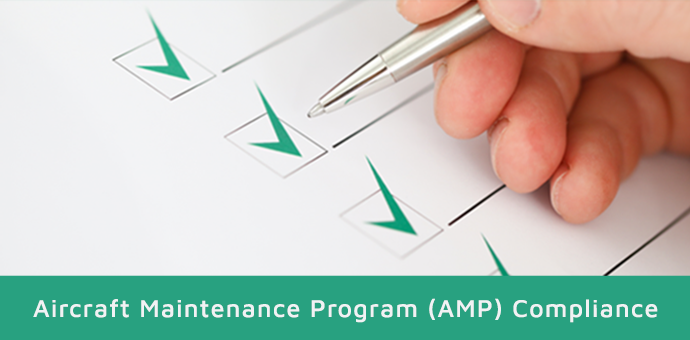Sofema Aviation Services (SAS) www.sassofia.com presents a consolidated checklist to support Aircraft Maintenance Program (AMP) Compliance
1) Utilisation – Check periods for anticipated utilisation; include a utilisation tolerance of not more than 25%. Where utilisation cannot be anticipated – Include calendar time limits.
2) Procedures for escalation where applicable & acceptable to the CA
3) Date and reference of approved amendments recorded
4) Review of any Pre-flight maintenance tasks that are accomplished by maintenance staff
5) Details of ageing aircraft system requirements with any specified sampling programmes, (if applicable)
6) Details of specific structural maintenance programmes, (if applicable), including but not limited to:
a) Damage Tolerance and Supplemental Structural Inspection Programmes (SSID)
b) SB review performed by the TC holder
c) Corrosion prevention and control
d) Repair Assessment
e) Widespread Fatigue Damage
7) If applicable, details of Critical Design Configuration Control Limitations together with appropriate procedures
8) Statement of the limit of validity for the structural programme if applicable
9) The periods at which overhauls should be made
10) The periods at which replacements should be made
11) A cross-reference to other documents related to:
a) Mandatory life limitations
b) Certification Maintenance Requirements (CMR’s), (if applicable)
c) Airworthiness Directives (AD)
12) Specific identification of the above items mandatory status
13) Reliability programme or statistical methods of continuous Surveillance
14) A statement that practices and procedures should be the standards specified by the TC holder
15) Each maintenance task (i.e. inspections – detailed, scan, general) should be defined in a definition section
16) Is the programme based upon the MRB report, the TC holder’s maintenance planning document or Chapter 5 of the maintenance manual?
17) For newly type-certificated aircraft / comprehensively appraise the manufacturer’s recommendations (and MRB report where applicable)
18) For existing aircraft types, comparisons with maintenance programmes previously approved
19) If CDCCL have been identified by the TC/STC holder, have maintenance instructions been developed
20) Amendments (revisions) to reflect changes:
a) In the TC holder’s recommendations
b) Introduced by modifications
c) Discovered by service experience
d) As required by the CA (e.g. Continuing Airworthiness Tasks introduced by repairs)
21) Permitted Variations to Maintenance Periods
a) Process in place to vary the periods through a Procedure approved by the CA
b) Vary the periods with the approval by the CA (temporary amendments to maintenance programme)
22) Periodic Review of Maintenance Program Contents
a) TC holder’s recommendations
b) Revisions to the MRB report (if applicable)
c) Mandatory requirements
d) Maintenance needs of the aircraft
23) Annual review defined
24) Reliability Programmes Developed in the following cases:
a) Programme is based upon MSG-3 logic
b) Programme includes condition monitored components
c) Programme does not contain overhaul time periods for all significant system components
d) Specified by the Manufacturer’s MPD or MRB
25) Reliability programme is irrespective of the fleet size
a) Tailor reliability programmes to suit the size and complexity of operation
b) Use of “Alert levels” should be used carefully
26) When establishing a reliability programme, consider the following:
a) Focus on areas where a sufficient amount of data is likely to be processed
b) How is engineering judgment applied?
c) Pool data and analysis (if not possible – consider additional restrictions on the MRB/MPD tasks intervals specified)
d) Engineering judgment
27) Reliability programme Objectives
a) Statement summarising the prime objectives of the programme
b) Recognise the need for corrective action
c) Establish what corrective action is needed
d) Determine the effectiveness of that action
Next Steps
Sofema Aviation Services (www.sassofia.com) and Sofema Online (www.sofemaonline.com) provide EASA Compliant Maintenance Planning Regulatory & Vocational Training – please see the websites or email team@sassofia.com
Tags:
Aircraft Maintenance, Aircraft Maintenance Program, Airworthiness Directives, AMP, Checklist, Corrosion Prevention, EASA compliance, Pre-flight maintenance, Reliability Programme, Repair Assessment, SAS blogs




